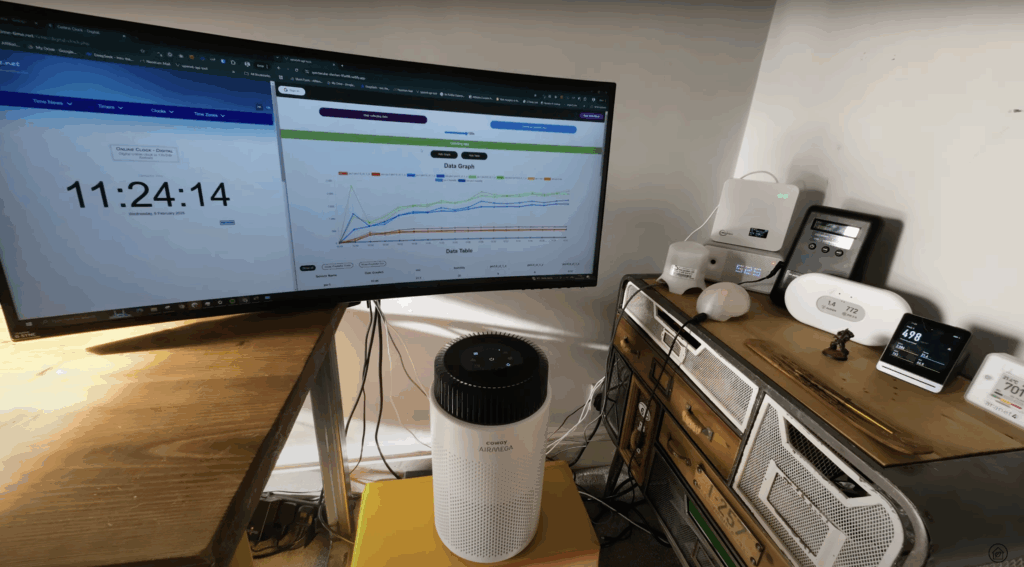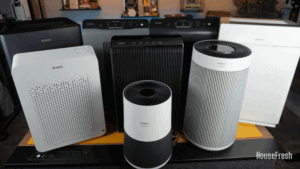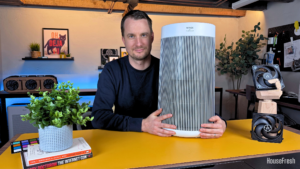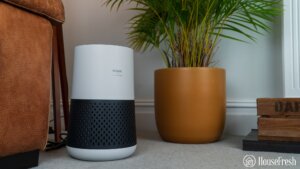Today, I will be reviewing the recently released Winix 5510.
This is the much anticipated successor to the incredibly popular Winix 5500-2, which has been one of my most recommended air purifiers since I first tested it back in 2023.
We received MANY requests to review the 5510, so I’m happy to be able to share the results of our tests with you today:

I paid $459.65 in total, including import fees and shipping, to get the Winix 5510 delivered to me in the UK, based on a list price of $249.99. However, as of May 2025, you can find the 5510 on Amazon for $179.99 and on the Winix America store for $199.99.
The lowdown on the Winix 5510

If you’re looking for a good performing air purifier with app connectivity for a space no larger than 372 sq. ft., then the 5520 is worth your consideration.”
If you don’t want to read my full review of the Winix 5510, here are the four things I like and the three things I don’t.
What we really like
What we think could be better
| Clean air delivery rate (CADR): | – Top speed PM1 CADR: 248 cfm – Sub-45 dBA PM1 CADR: 97 cfm – AHAM PM2.5 CADR: 252 cfm (dust) |
| Filter technology: | True HEPA filter with pelleted activated carbon and a removable pre-filter |
| Recommended room size: | 372 sq. ft. (5 air changes per hour) |
| Dimensions: | 15.9 x 11 x 25.2 in (40.3 x 27.9 x 64 cm) |
| Weight: | 13.03 lbs (5.9 kg) |
| Noise level in decibels from 3 ft. away: | Sleep mode: 35.2 dBA Speed 1: 36.8 dBA Speed 2: 40.8 dBA Speed 3: 51.6 dBA Speed 4: 67.2 dBA |
| Electricity consumption in watts: | Standby: 0.65 watts Sleep mode: 3.51 watts (3.77 with PlasmaWave) Speed 1: 4.59 watts (4.87 with PlasmaWave) Speed 2: 6.58 watts (6.89 with PlasmaWave) Speed 3: 15.68 watts (15.98 with PlasmaWave) Speed 4: 52.62 watts (53.94 with PlasmaWave) |
| Filter lifespan: | 12 months |
| Manufacturer’s warranty: | 2 years |
| Country of origin: | South Korea |
| Country of manufacture: | South Korea |
Ok. Let’s jump into the full review.
The best Winix 5510 feature: CADR of 250 cfm in a compact package
The 5510 looks good, doesn’t take up too much space, and it can still clean the air nearly as fast as the larger 5500-2
According to the CADR certificate from the Association of Home Appliance Manufacturers, the Winix 5510 has a dust CADR of 252 cubic feet per minute.
This places the 5510 in the same group as highly popular mid-tier devices such as the Winix 5500-2, the Coway Airmega 250S or the Smart Air SA600. However, the design of the 5510 is smaller than all three of them.
A good-looking air purifier with smart features and app connectivity
The most obvious improvement brought by the 5510 over older Winix devices is its look & feel. Let’s break it down.

As soon as I unboxed the 5510, I could immediately tell that the design was smaller than the older rectangular devices from Winix.
To be more precise, the 5510 measures 1.3 inches less in width and 0.9 inches less in height than the 5500-2. This also translates into its weight, with the 5510 being 1.44 pounds lighter than the 5500-2.
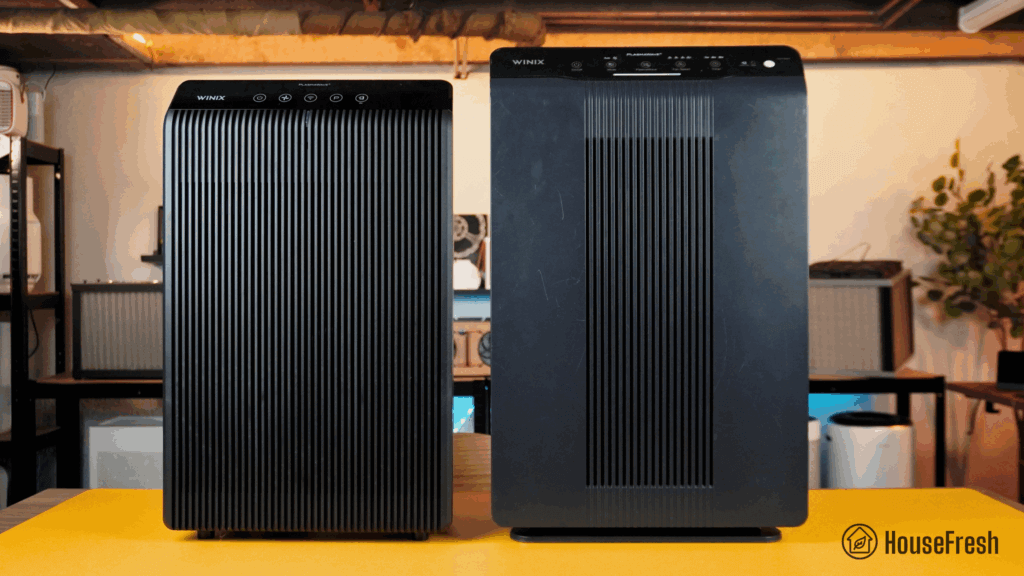
The front cover of the 5510 unclips from the front to reveal the dual sensor and the air filters.
The 5510 comes with a gas sensor that automatically sets the fan to work once it senses VOCs in the air, and a light sensor that automatically sets the unit to sleep mode when it detects darkness.
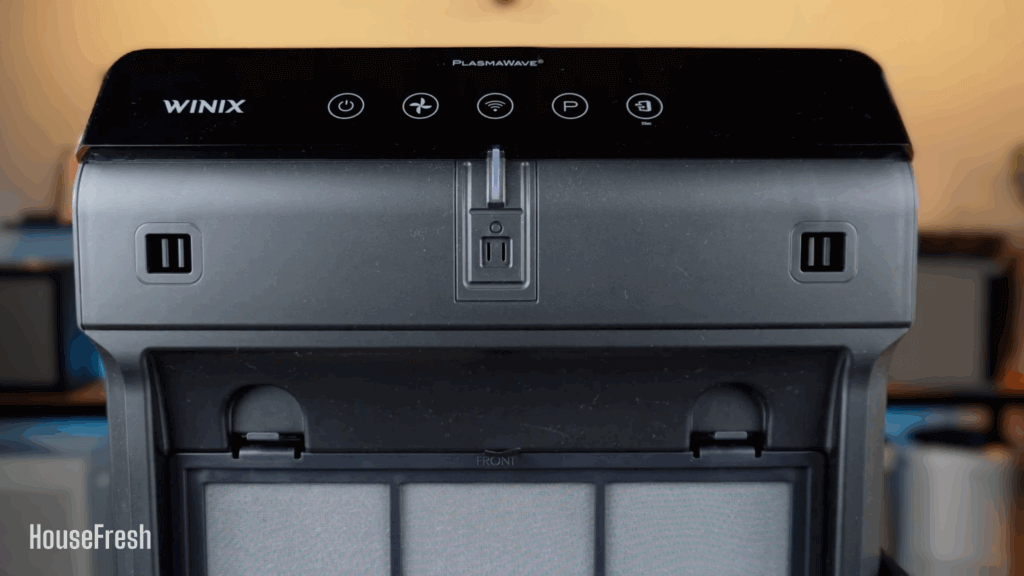
As with other devices with in-built sensors, the 5510 comes with an LED light that sits at the centre of the front panel, and that will change from blue to red depending on how bad the air quality is based on readings from the gas sensor.
The control panel sits at the top and is intuitive and easy to navigate right out of the box.
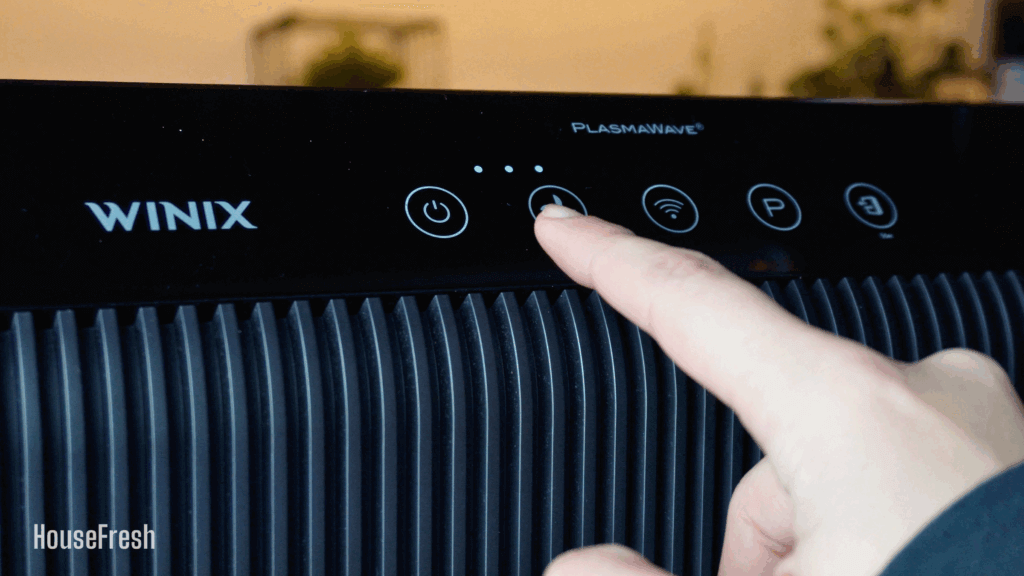
From left to right you have a power button, a fan speed / sleep mode button, a WiFi button, the PlasmaWave button (for enabling and disabling the bipolar ionizer), and lastly an indicator light that will alert you when it’s time to change the filters.
After reviewing the T810 and now the 5510, it has become obvious to me at this point that Winix is focusing heavily on the aesthetics of their devices with their new generation of air purifiers.
Another big focus for Winix has been the introduction of smartphone connectivity through an app available both on iPhone and Android.
I was able to install the Winix app in one go without issues, which I wish would be the norm but unfortunately it isn’t.
Once it’s set up, I found that the app has very clean UX and doesn’t have ads plastered all over the place trying to sell you any other products like other brands do – I am talking to you, Levoit!
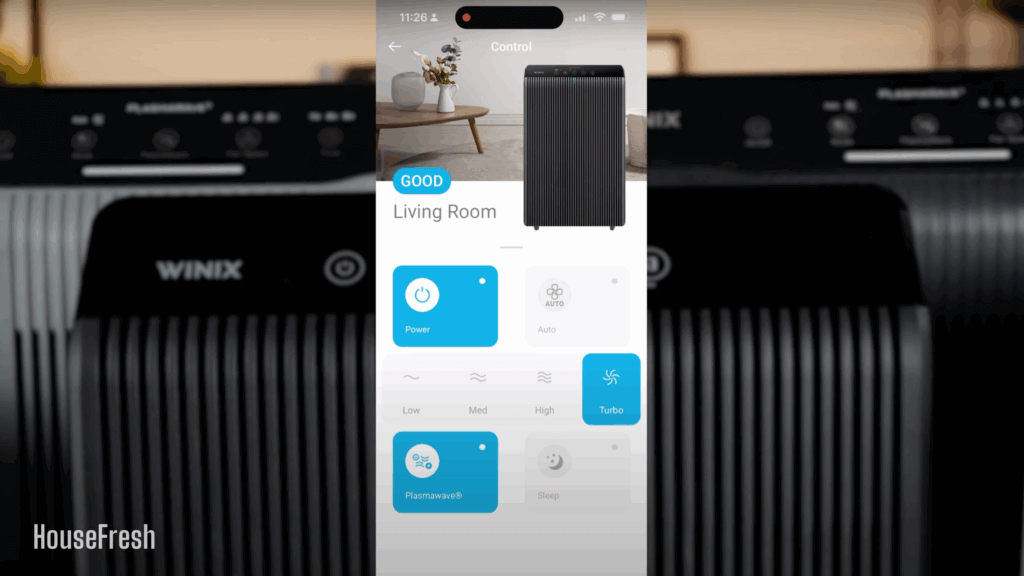
While I didn’t experience any issues with the app, I found it quite bare bones compared to other apps I use for my other air purifiers.
There are a lot more features available in the apps from brands like Levoit and Xiaomi, but I guess it makes sense as they both have been developing their apps for a lot longer. For example, both apps offer the ability to adjust the auto-mode sensitivity and track air quality data in real time without lags.
I hope that Winix will add improvements and features like those to their app soon, but the key thing is that their current app works and there are no major issues that will mean you won’t use it.
True HEPA filtration with activated carbon and optional bipolar ionization
Three separate filters that can be removed individually when you need to clean them or replace them.
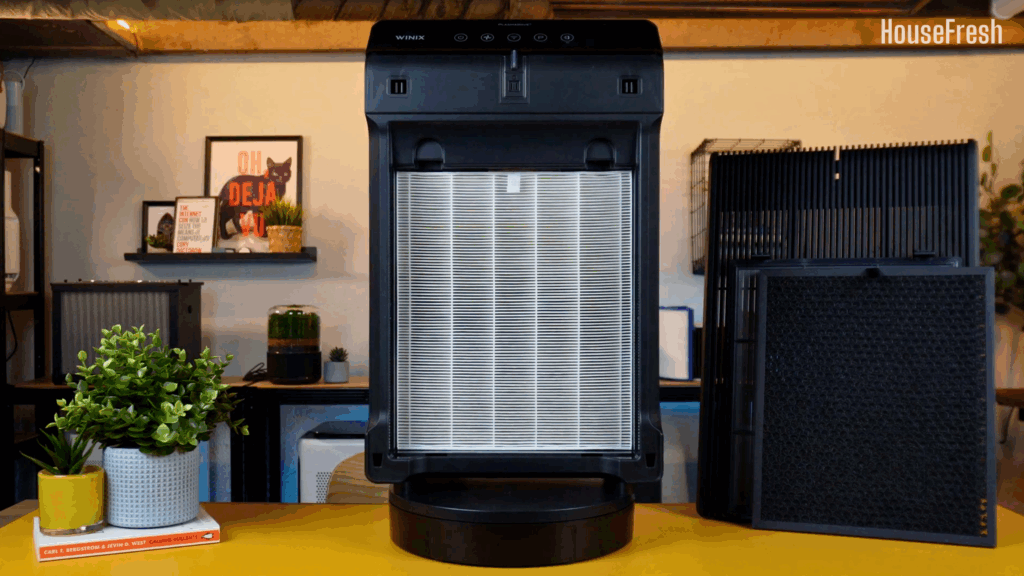
The 5510 comes with a removable pre-filter (something I’m glad that Winix decided to keep), a pelleted activated carbon filter and a True HEPA particle filter.

It is also great to see Winix opt for an unbonded filter because once the carbon runs out and starts getting smelly, you can just take it out and continue to use the True HEPA filter or simply replace the carbon filter. Personally, I prefer this to bonded filters that force you to throw the whole filter away once the carbon runs out.
Speaking of carbon, I reached out to Winix to ask about the amount of carbon in the filter and they explained that it comes with 226 grams of carbon, which is the same as what we see with the older 5500-2.
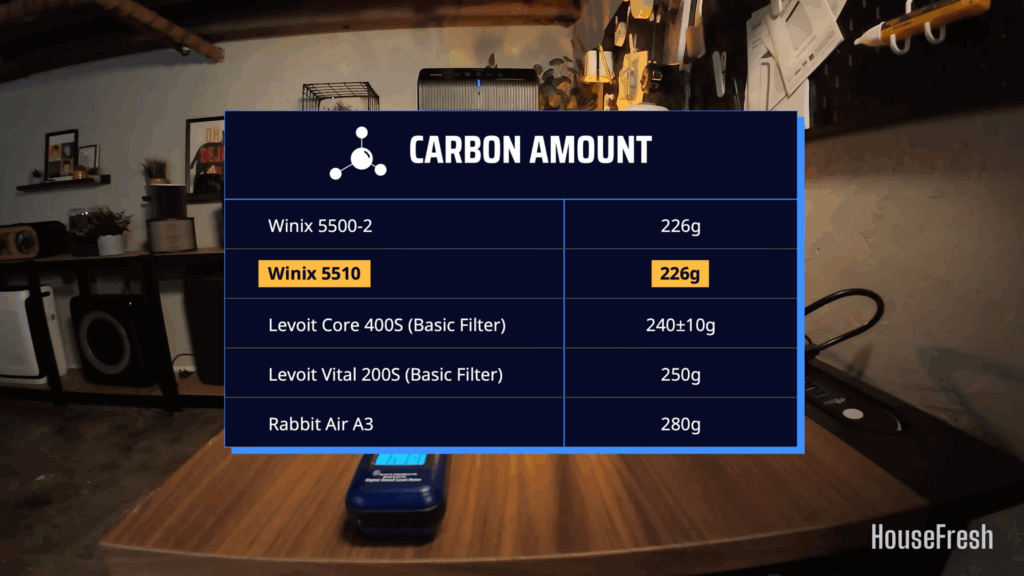
It’s good to see Winix using pelleted carbon in the Q filters for the 5510, but it would be good to see some other filter options that include more carbon for those who want to deal with more odors.
The last layer of filtration comes in the form of PlasmaWave, which is a bipolar ionization process developed by Winix that produces lower levels of ozone and chemical byproducts compared to what we see with air purifiers that release negative ions.
In our testing, we’ve seen that enabling PlasmaWave can lead to a small increase in performance of around 5% on average. And if you want to avoid ionization, you can just disable PlasmaWave on the 5510 and all other Winix devices.
The 5510 uses a different type of filter set, Filter Q — 1712*0123-00, which works with the 5510 and 5520 models but is too small for the 5500-2, the 5300-2 and other older rectangular Winix devices.
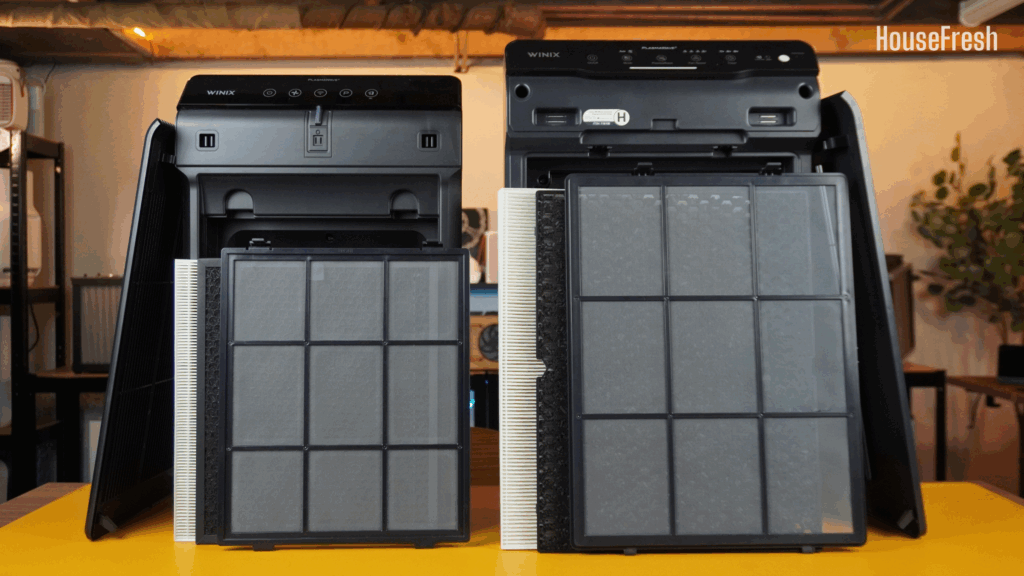
Let’s move on to the HouseFresh performance test to see what happened…
The Winix 5510 cleared our test room in 24 minutes
This matches the results of the Smart Air SA600, the Levoit Core 400S, the Rabbit Air A3 and the Coway Airmega 250S

First, we tested the Winix 5510 running at top speed with PlasmaWave enabled.
According to our PurpleAir Zen sensor, the 5510 needed 24 minutes to achieve PM1 zero in our 728 cubic ft. test room, which matches what we expected based on its CADR report:
Let’s compare this result to other similar-performing and similarly priced devices running at their top speed:
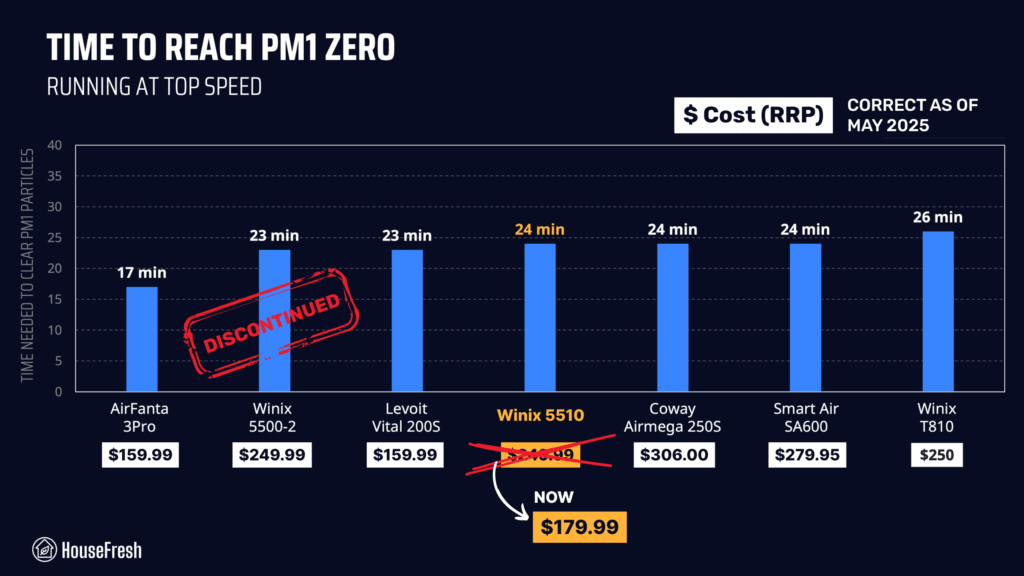
As you can see from the table, the 5510 compares very well against some of the best mid-sized devices we have tested when looking at raw performance at top speed, but considering it is a new model, I was hoping it would be at least a little quicker than the older 5500-2.
That said, now that the Winix 5500-2 has been discontinued, it looks like Winix has dropped the price for the 5510 and this makes it easier to recommend it over the older 5500-2.
I know many people want to stay away from ionizers, so I re-tested the 5510 without PlasmaWave:
When running at top speed with Plasmawave disabled, the 5510 took 2 extra minutes, completing our particle removal test in 26 minutes – which is the same result we got when testing the smaller Winix T810 with Plasmawave enabled.
Louder than the older Winix models
In our testing, the sound levels of the 5510 ranged from 35.2 dBA to 67.2 dBA

As I always say, if an air purifier is too loud, you will turn it off eventually.
That is why we used a sound meter to measure how much sound the Winix 5510 generates from three feet away. We did this across all fan speeds, including sleep mode:
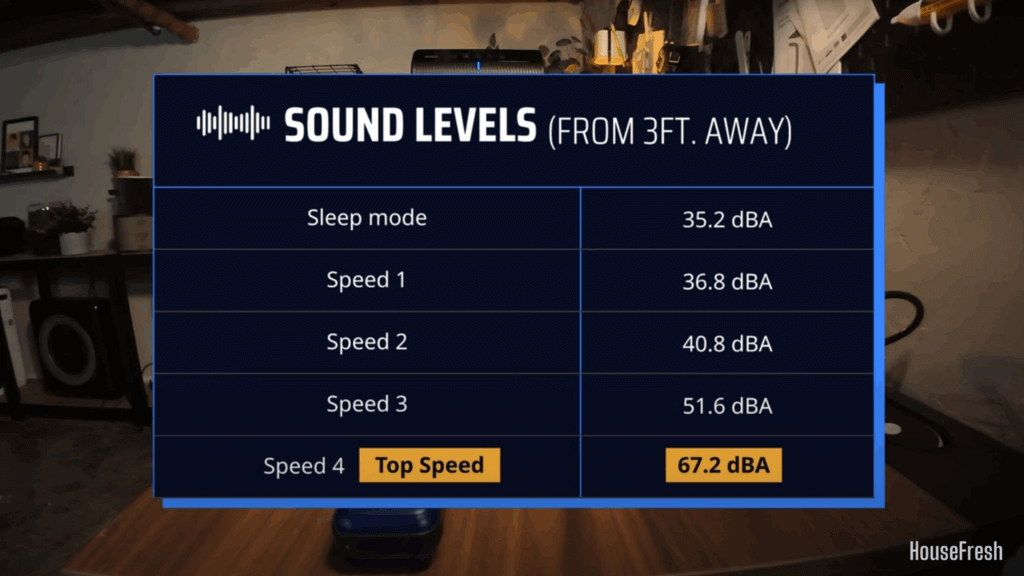
Be aware that our background noise is 35 dBA, so the 5510 running at speed one (1) and in sleep mode is likely to be quieter if you could measure sound levels in a silent room.
We can now compare the air cleaning performance and sound level at top speed against data from other air purifiers in the same price range:
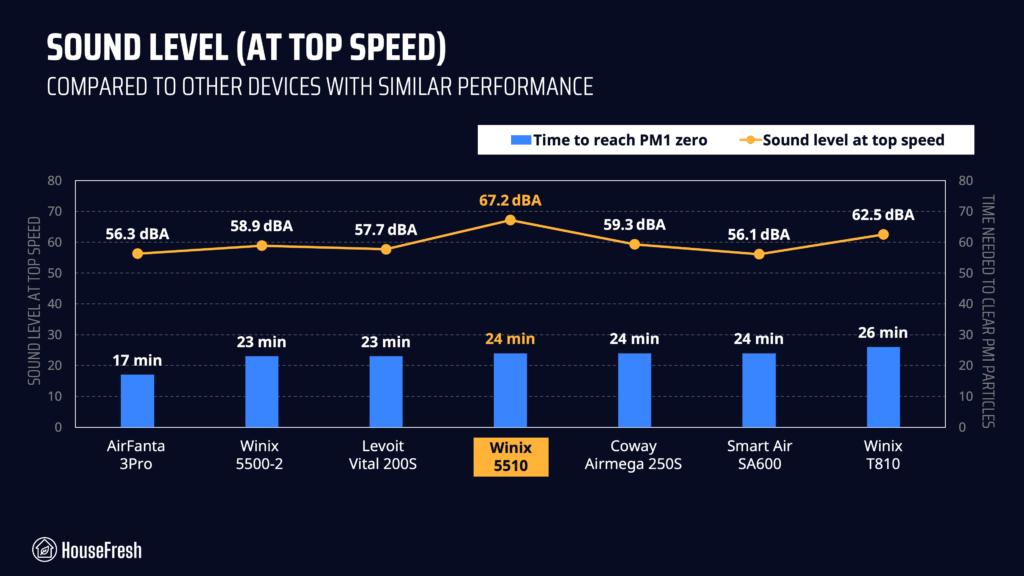
As you can see from the table, the sound generated by the 5510 at top speed is clearly louder than that of most other air purifiers with a similar clean air delivery rate.
But before we give up on the 5510, let’s test its quiet performance…
One clear benefit of larger CADR devices is that they can be run at lower fan speeds and still effectively clean the air.
Running at the 5510 at speed 2 will produce 40.8 dBA of sound, which is below the 45 dB(A) limit we have set for our quiet performance tests and close to the 40 dBA limit that CleanAirStars recommends for quiet classrooms and offices.
So I repeated the particle removal test in our 728 cubic feet test room with the 5510 running at speed 2, and it managed to reach PM1 zero in 60 minutes.
We can compare these results with other air purifiers running at sub-45 decibels:

When running at sub-45 dBA fan speeds, the Winix 5510 performed poorly compared to the older Winix 5550-2, but it outperformed the Coway Airmega 250S.
By the way, I also tested the 5510’s particle removal performance running at speed 3, and it was much quicker, completing the test in 38 minutes. However, at speed 3, the 5510 generates 51.6 dBA, so it wasn’t a fair comparison against the devices running at sub-45 dB.
All in all, however, the 5510 can’t compete with PC fan-powered air purifiers like the Luggable XL from CleanAirKits and the 3Pro from AirFanta when accounting for sound and performance. But this is expected as we keep seeing HEPA retail air purifiers being outmatched by PC fan-powered devices.
The cost to run a Winix 5510: $139.97 per year
1. Electricity costs = $59.98 per year
As always, we used our energy meter to measure how much electricity the 5510 uses when running at each fan speed and also while on standby.
I also made sure to measure how much power was used once I disabled PlasmaWave:

If you had to leave your 5510 running 24/7, it would cost $59.98 in energy costs for a year.
With this calculation in mind, we can compare the annual energy costs you can expect from the 5510 against expected energy costs for other air purifiers in the same price range:

As you can see from the able, the Winix 5510 uses just a little bit more energy than the older 5500-2, but its estimated yearly costs are in line with those of other similarly priced air purifiers.
2. Filter costs = $79.99 per year
However, it’s not just energy usage that adds to the running cost of an air purifier; you will also need to replace the filters eventually.
Winix says you need to replace the filters for the 5510 every 12 months.
The recommended OEM Filter Q kit costs $79.99 for one carbon and one True HEPA particle filter.
We can now combine energy and filter replacement costs to estimate yearly maintenance costs associated with running a 5510 24/7 at top speed.
But looking at this figure in isolation won’t be as useful, so let’s compare it with other similar performing air purifiers:
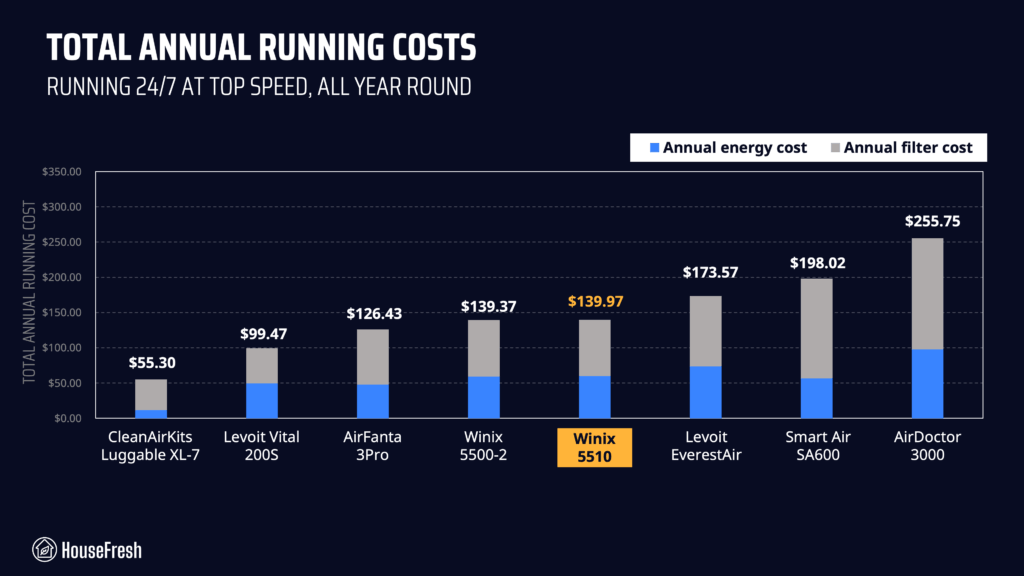
As the table shows, running a 5510 for a year will cost you $0.60 more than the older 5500-2, assuming you buy genuine Winix filter replacements.
Generic filters for the Winix 5510 are available on Amazon, with one set costing $45.99 and a 2-pack selling for $49.99. However, we haven’t yet tested these unofficial filters, so I can’t recommend them. We will be sharing an update on this with our Patreon supporters as soon as we complete the tests.
Bottom line: Should you get the Winix 5510?
Now that the Winix 5500-2 has been discontinued, the 5510 is the best next thing from Winix.
I hate to say this, but the Winix 5510 offers less powerful air cleaning performance at louder operation than older Winix models. Sadly, I can’t recommend the 5500-2 or the 5300-2 anymore as they have both been discontinued.
But does this mean that the 5510 is a bad investment? Well… not really.
In our air cleaning performance tests, the Winix 5510 running at top speed is just one minute slower than the older 5500-2. And this level of power comes in a much more compact body and smaller filters, which explains why it is louder, as the fan has to work harder.
Plus, the 5510 looks more high-end than the 5500-2 and the 5300-2 AND it comes with smartphone connectivity through the Winix app, which has a good UX and no annoying bugs. So you get some good features that you wouldn’t get access to with the older models.

However, if you are sensitive to sound and prefer to run your air purifier at low, quiet fan speeds, then I suggest you look into the Winix T810. The T810 offers similar performance at top speed to the 5510, but you will get better air cleaning power at quiet fan speeds. Plus, it also comes with smartphone connectivity through the Winix app.
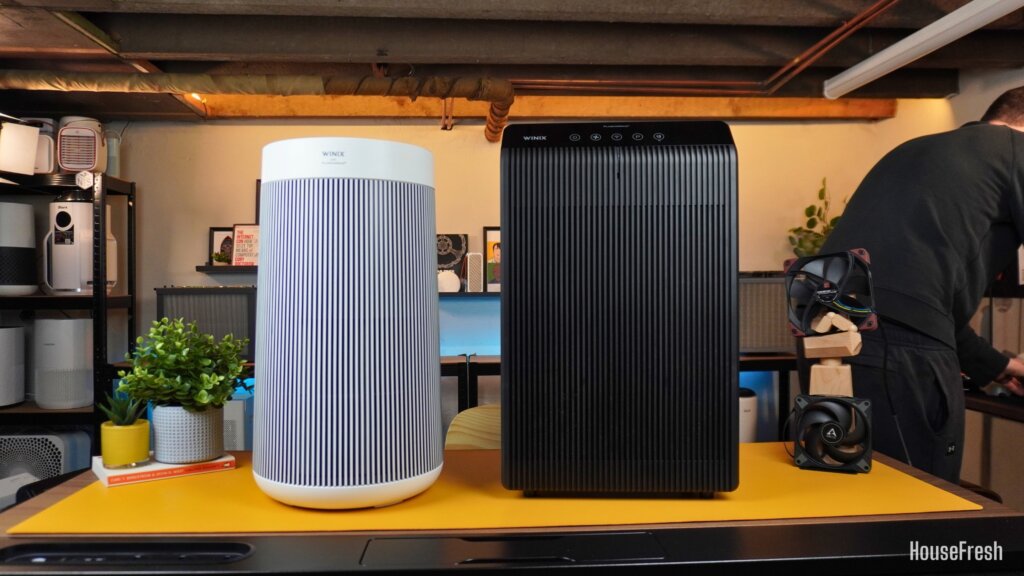
If you are a big fan of app support but are not too bothered about getting a Winix device, then I recommend looking into air purifiers from brands like Levoit and Xiaomi, as their apps are much more polished and feature-rich. Devices like the Levoit Vital 200S or the Xiaomi Pro 4 will offer similar air cleaning performance to the 5510.
Winix created an incredible device in the 5500-2, so it will be tough for them to top that achievement. With the 5510, Winix is making a head start, with clear improvements in terms of aesthetics and user experience. I’m keen to see how this air purifier performs in the long run, so I will keep this review page updated with new insights.
If you decide to buy a 5510, please make sure to use this link to support the work we do here at HouseFresh. We will get a small commission on the sale at no extra cost to you, and this will allow us to continue to buy and test air purifiers in the future.
Are you still unsure about whether the Winix 5510 is the right air purifier for you? Just drop me a comment below and I’ll get back to you as soon as possible. Or email me if you would rather discuss in private 🙂
SOURCES
We calculated energy consumption costs with the help of the Department of Energy’s appliance energy calculator. We calculated yearly costs associated with running the Winix 55120 for 24 hours a day for 365 days. We ran this calculation utilizing the U.S. average utility rate of $0.1268/kWh as of May 2025


